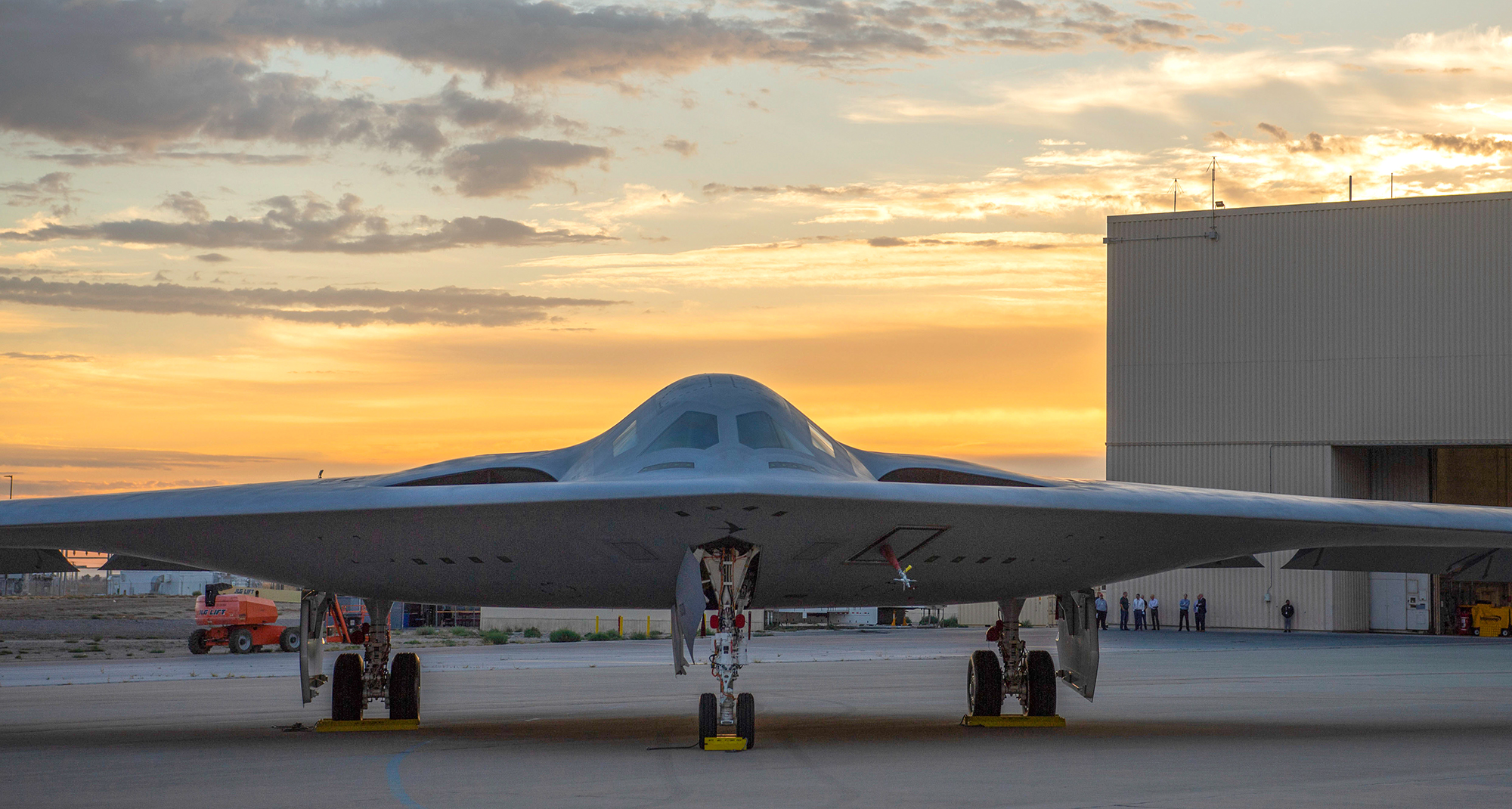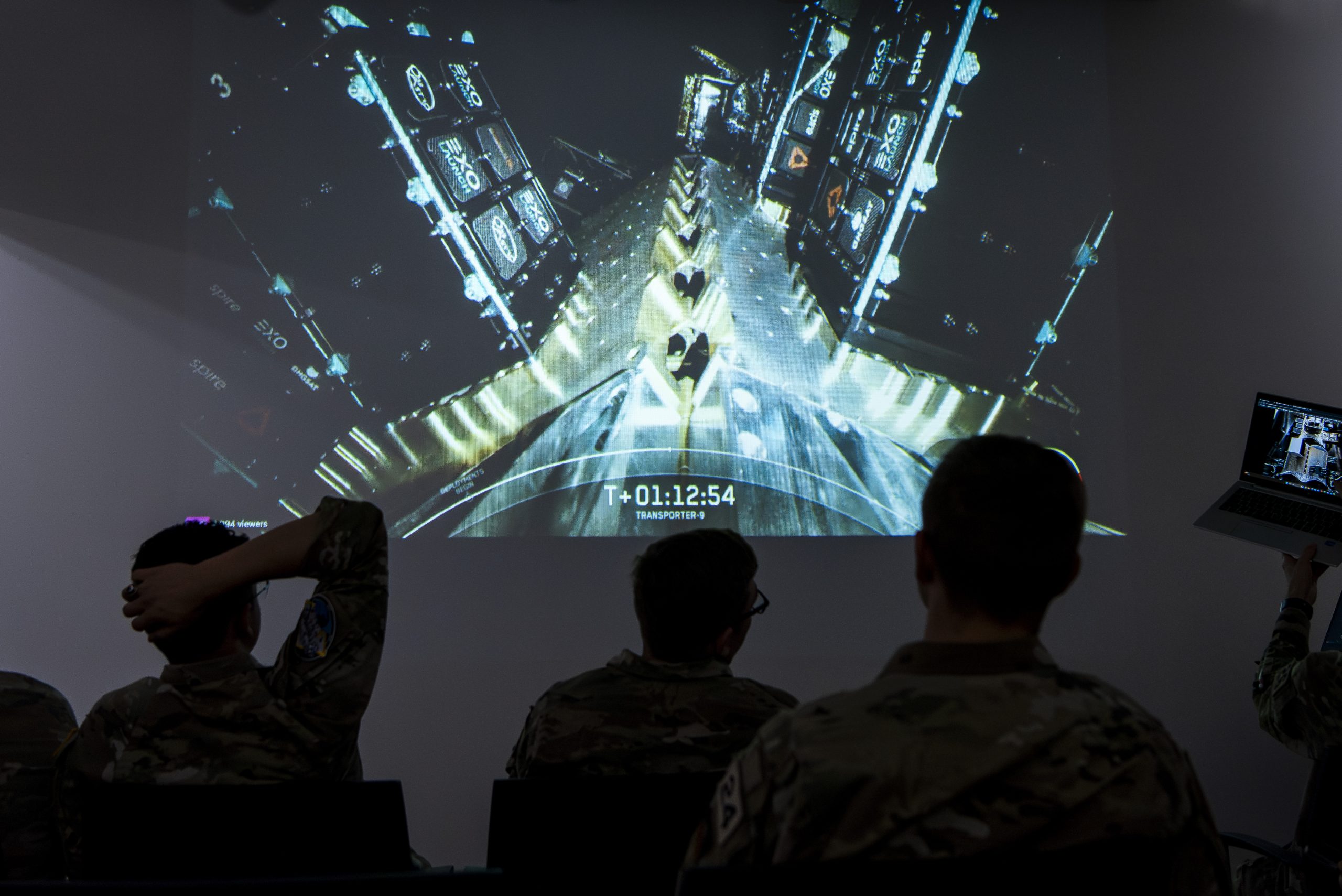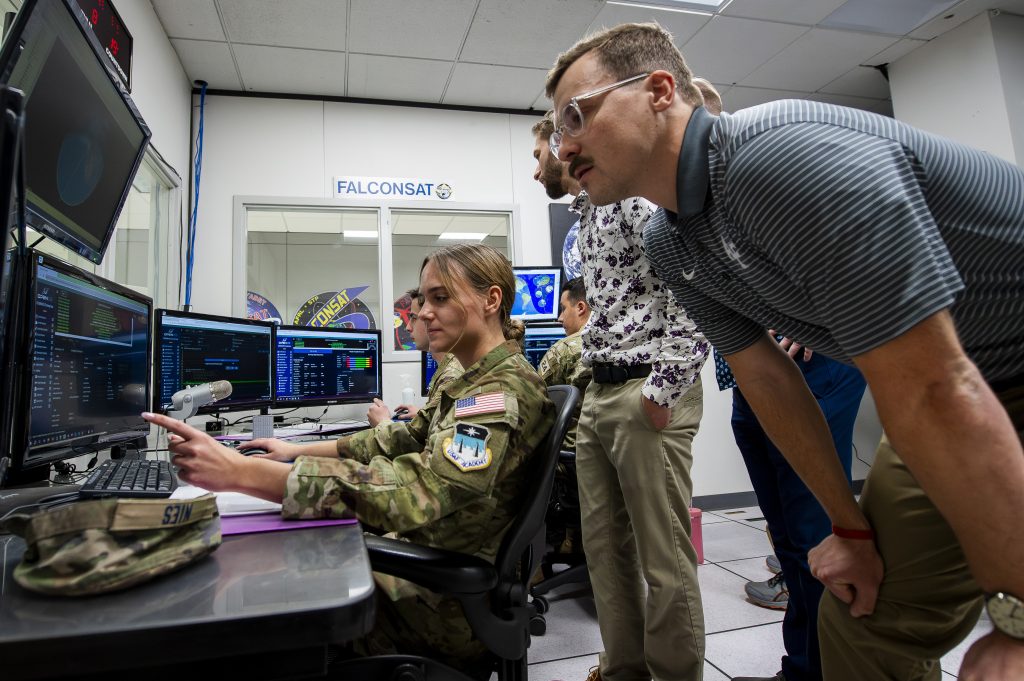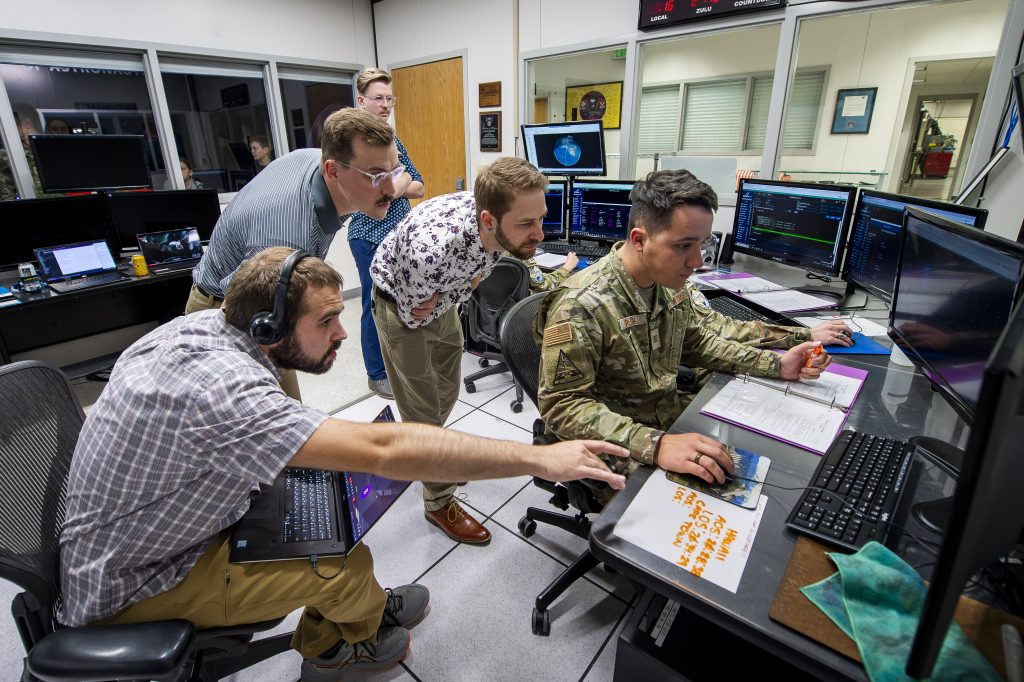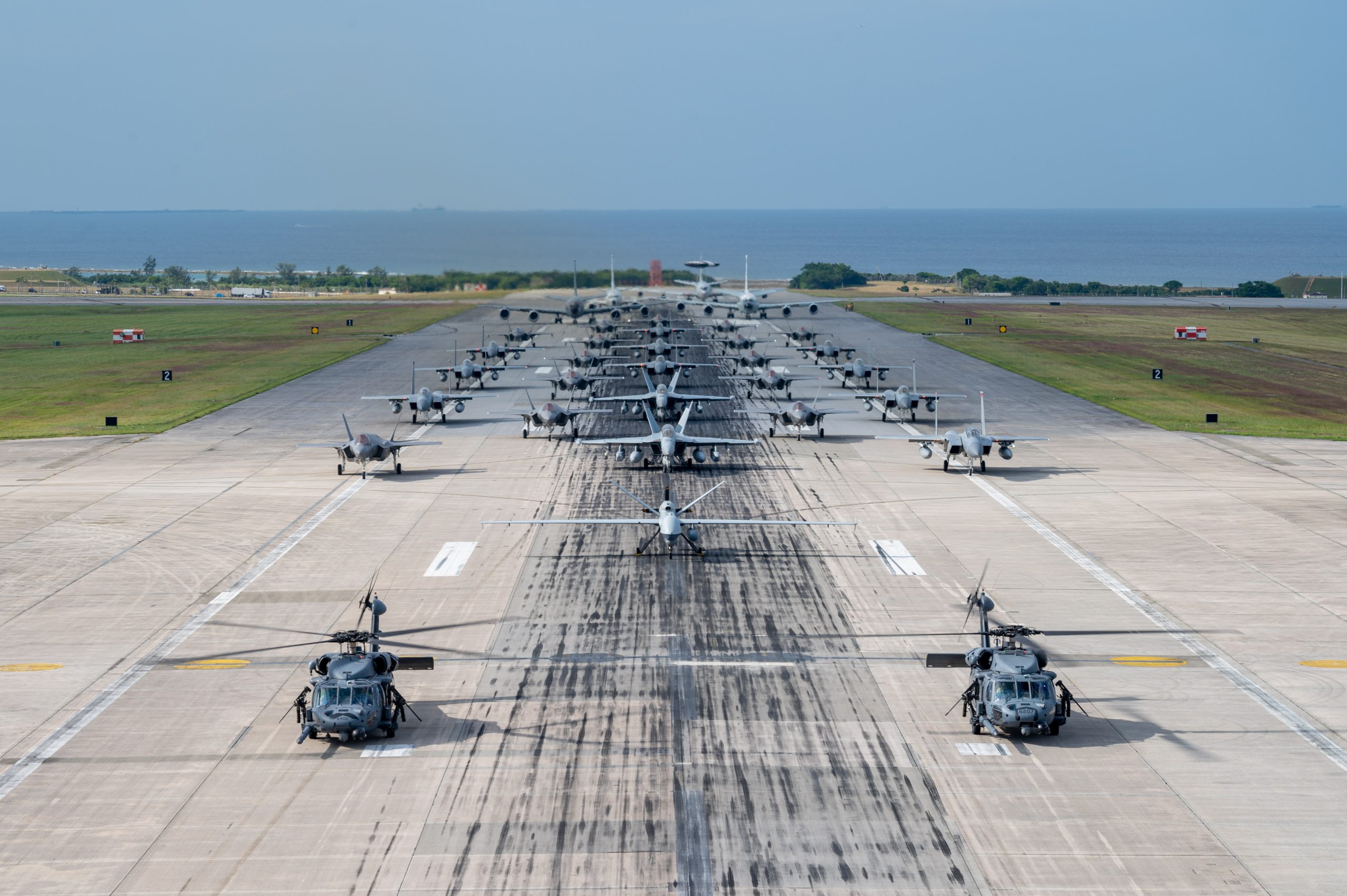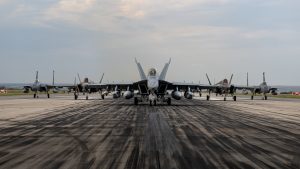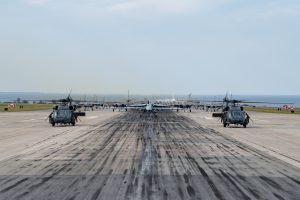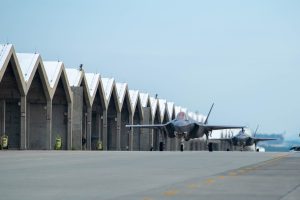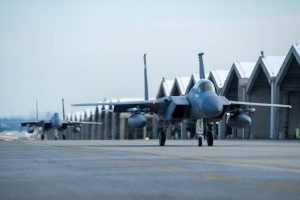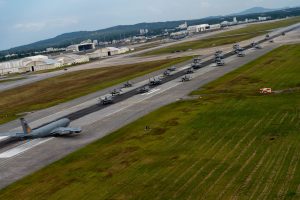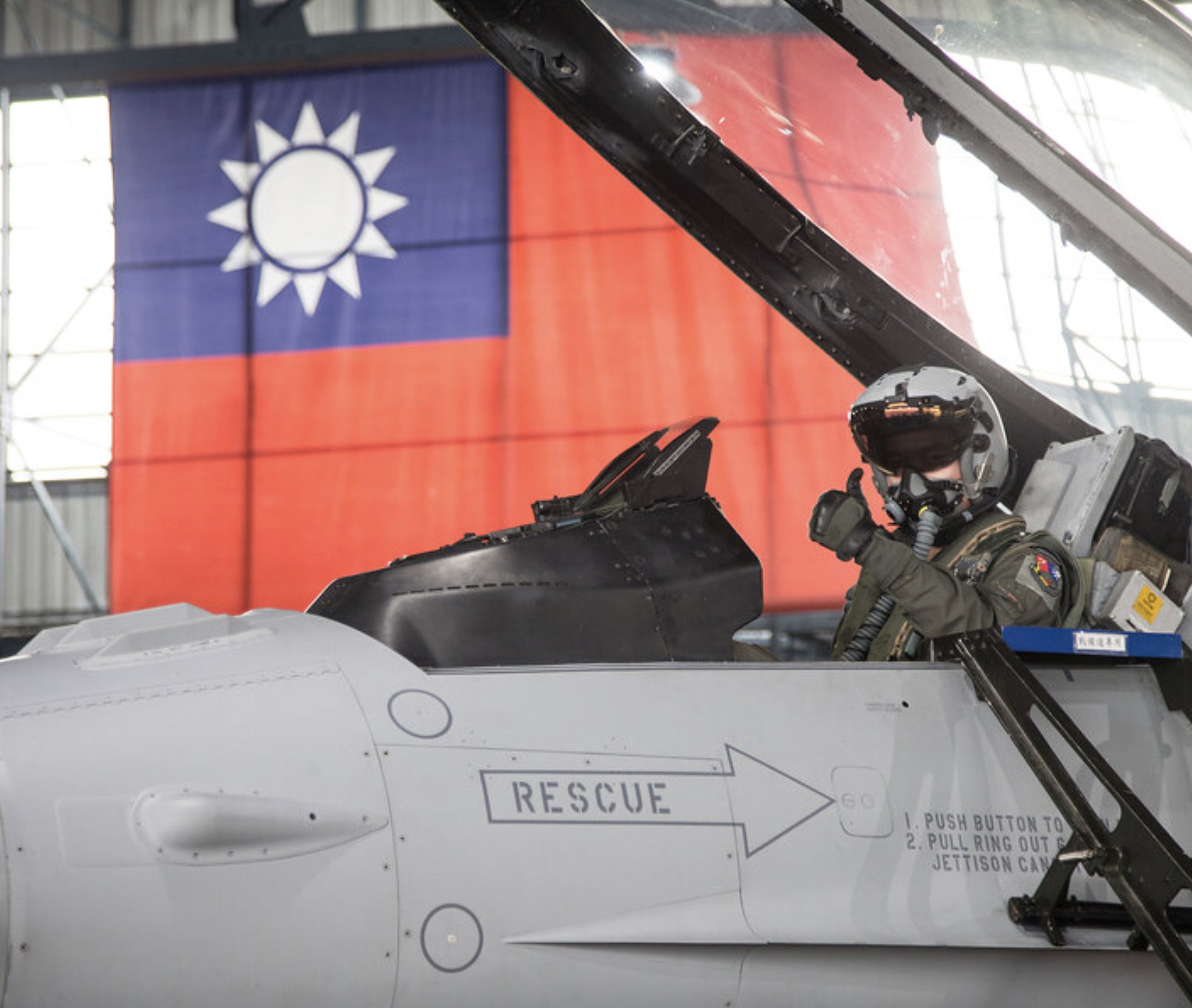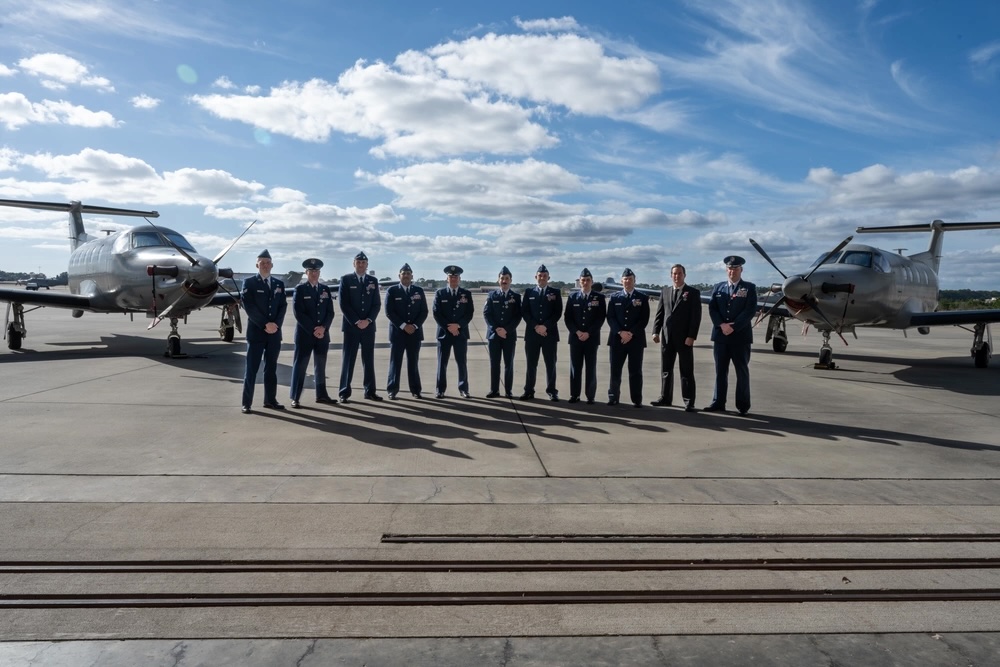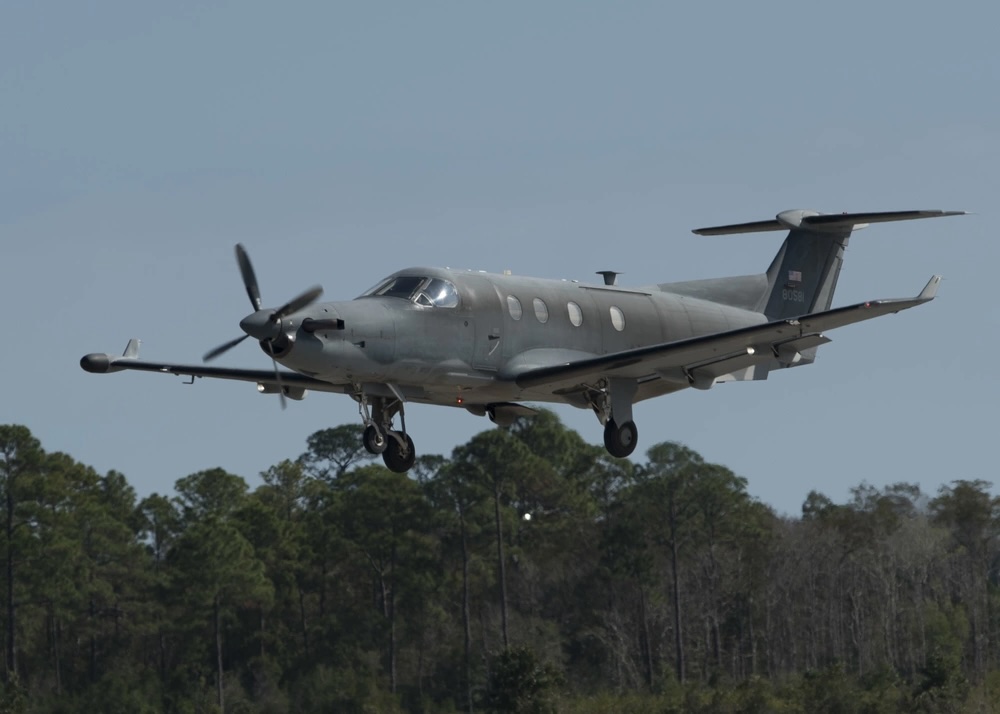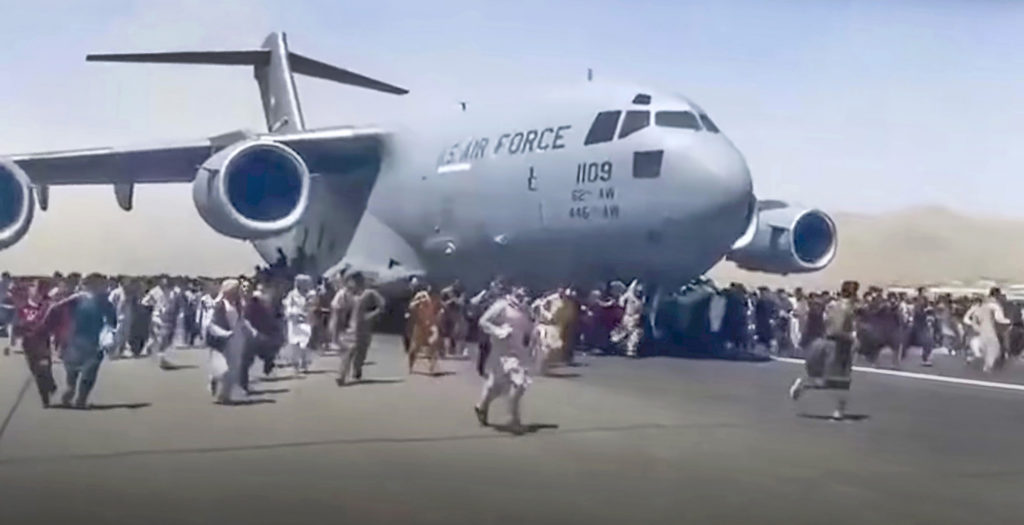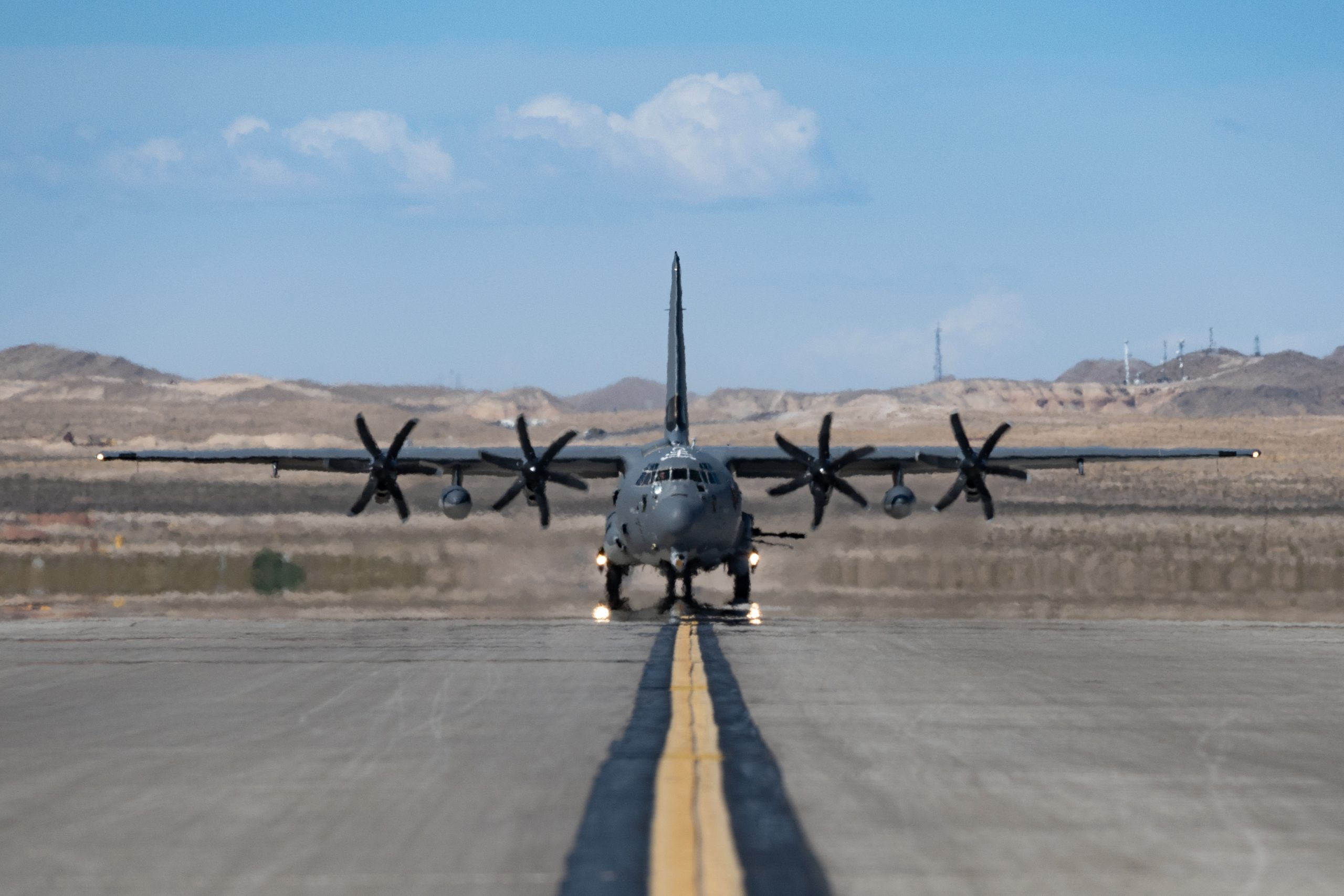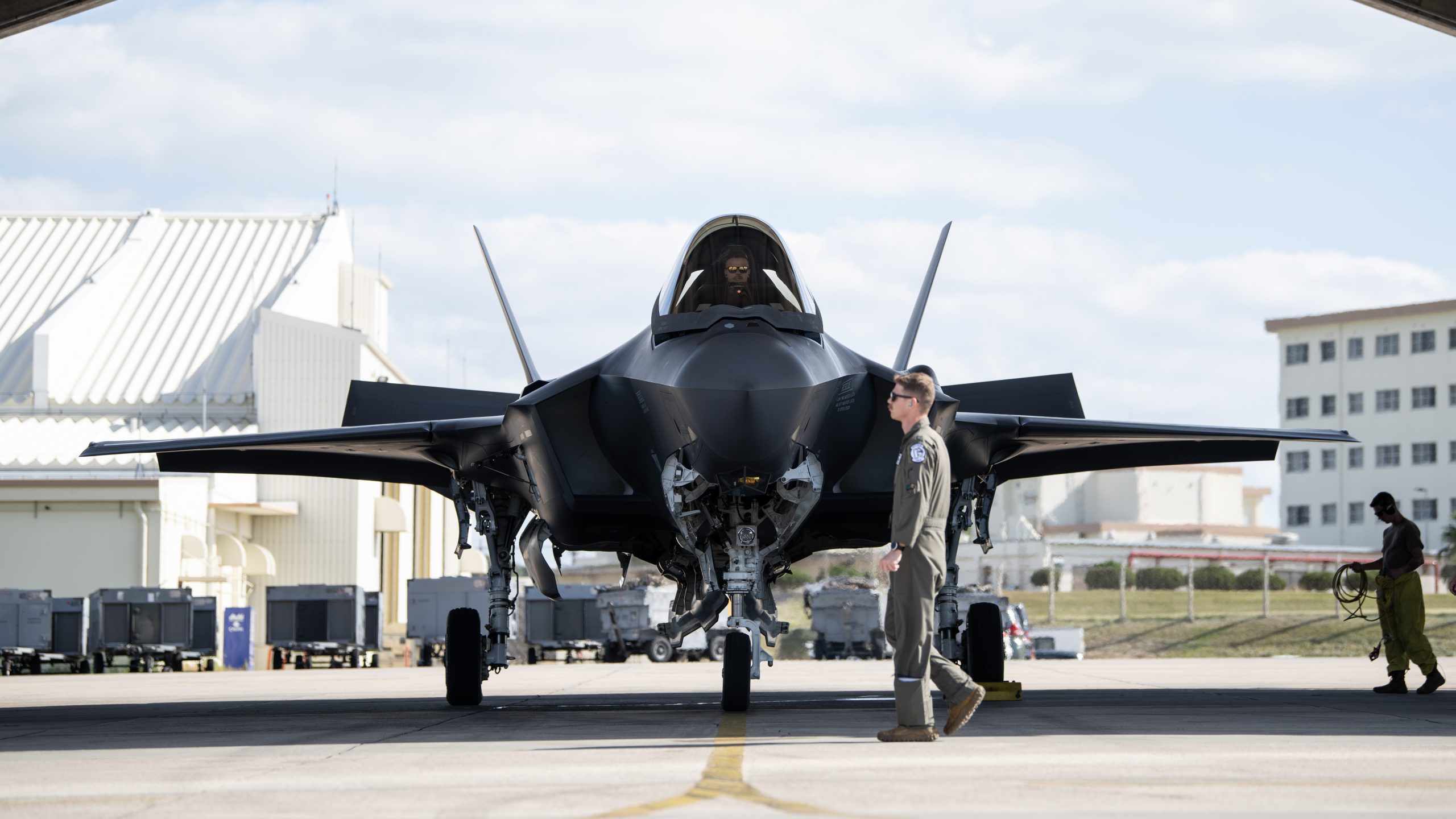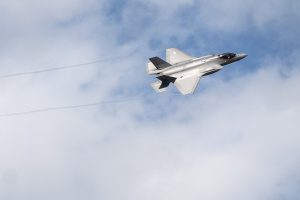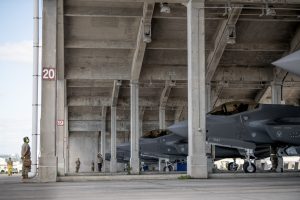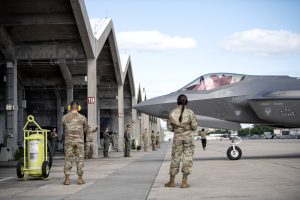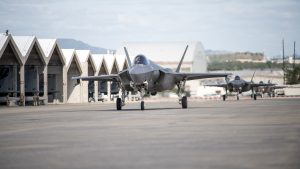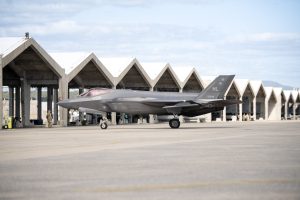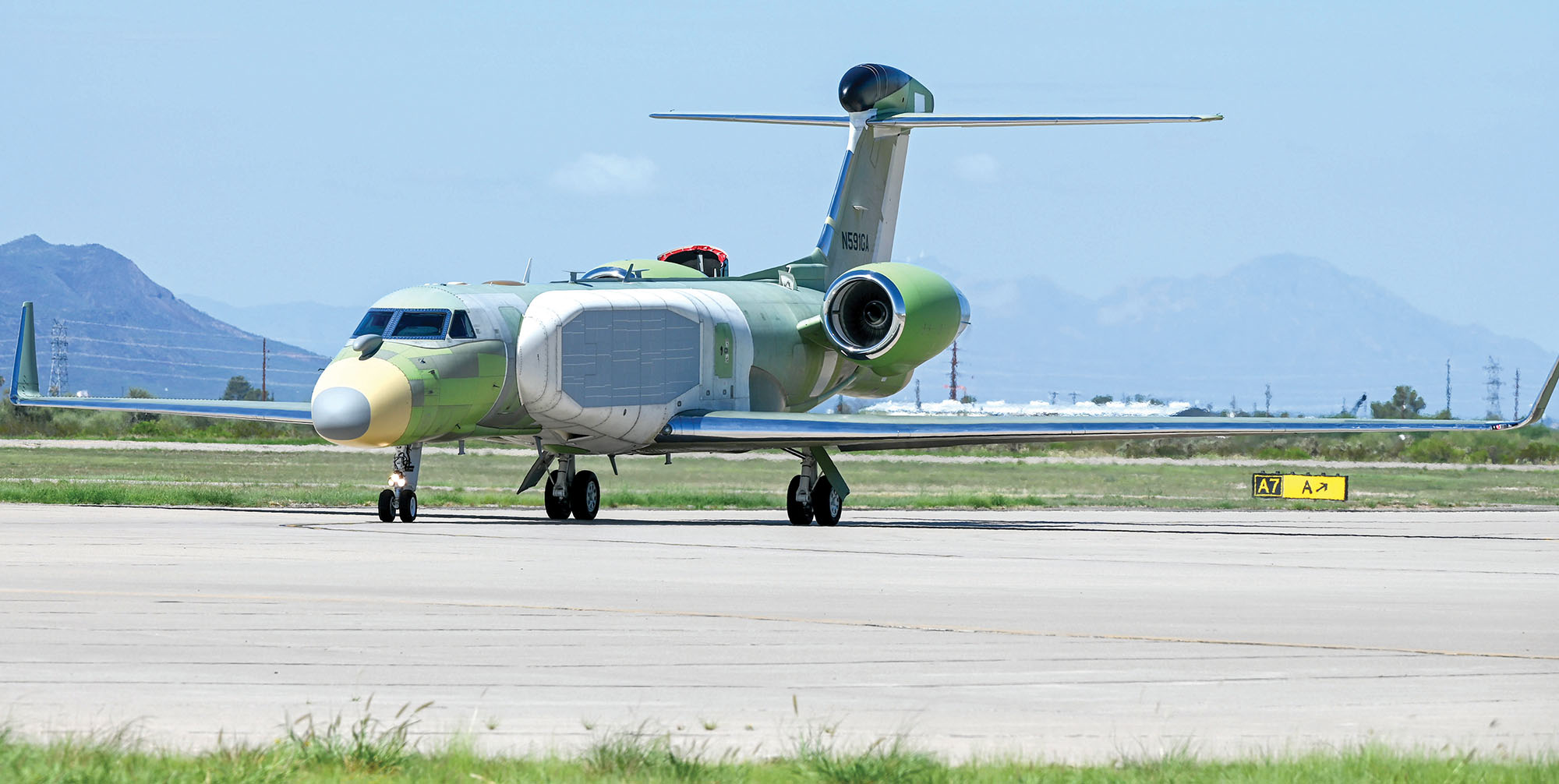After nearly a year of speculation since the Air Force arranged a carefully-controlled, forward-only view of the B-21 Raider at its December 2022 rollout—leaving many questions about the shape and equipment of the bomber—images of the aircraft taken of its November taxi tests and first flight provided some definitive answers about it.
All images circulating of the taxi tests and first flight were taken by private photographers staking out Air Force Plant 42 at Palmdale, Calif., where Northrop Grumman builds the B-21. The Air Force has yet to release any official images of the events.
Taking off at dawn on Nov. 10, the B-21’s underside was illuminated at a nearly straight-on angle, revealing all its features in crisp relief. The aircraft made a circuitous, roughly 140-minute flight to the northwest before landing at Edwards Air Force Base.
Overall Shape
The first flight settled the question of whether early Air Force concept art of the B-21’s overall shape was realistic or meant to fool potential adversaries. The planform is in fact a simple W-shape flying wing—as the Air Force originally described—without the serrated tail seen on the B-2, on which the B-21 is clearly based.
The B-2 originally had a similar planform, but in the mid-1980s, the Air Force added a requirement that the B-2 be capable of sustained low-level, terrain-following flight, forcing the addition of additional tail area and control surfaces. The redesign cost several billion dollars and added several years to the B-2’s schedule.
The W-shape of the B-21 suggests the aircraft will only fly at higher altitudes. The B-21’s wing angle of sweep is also similar to that of the B-2. A striking aspect of the aircraft is its prominent “diamond” center area, which harkens to the earliest ideas of stealth shaping from the 1980s. The fact that the aircraft is all-around light gray also indicates that, unlike the B-2—which is painted dark gray to be visually hard to detect at night—the B-21 is meant to be a daytime bomber.
Nickname
Stenciled on the aircraft’s nose gear door is the name “Cerberus,” the mythical three-headed dog that guards the gates of the underworld. The 20 aircraft in the B-21 fleet all carry the names of states.
Size
Based on the known size of its F-16 chase plane and overall shape, the B-21’s wingspan is likely to be about 140 feet; smaller than the B-2’s 172-foot wingspan, but somewhat larger than earlier estimates. Its length appears to be about 55 feet, versus the B-2’s 69 feet. The Air Force has consistently said the B-21 will be somewhat smaller than the B-2 and have a smaller weapons payload.
The Tail
The B-21’s exhausts have a scalloped shape, similar to the B-2’s air intakes, and are very different from the simple slots on the older bomber. The exhausts are set back from the tail, where darkened panels indicate some kind of thermal reduction treatment. Unlike the B-2, where the rearmost portion of the tail was articulated, the tail of the B-21 seems to be fixed.
On the B-2, this articulating control surface, known as the “beavertail,” but officially known as the Gust-Load Alleviation System, was intended to help the aircraft leap off the runway more quickly if a nuclear attack was coming. However, B-2 pilots have said this feature wasn’t considered useful and was effectively “turned off,” so its deletion from the B-21 isn’t surprising.
Auxiliary Air Intakes
The B-21 has two tall, triangular doors on its upper surface—one on either side—which open to provide more air to the engines during ground operations, takeoff, and landing. The fact that there are only two of these, symmetrically positioned, suggests there are only two engines powering the bomber. There are four analogous features on the B-2, which has four engines.
Weapons Bays
The B-21 may have three weapons bays: seams show the clear outlines of doors for the main center bay, as well as seams indicating engine access doors. Between them, another set of slim doors may be additional weapon launch doors. The B-21 is to have capability to carry at least three specific weapons: the B61-12 nuclear gravity bomb, the conventional Stand-in Attack Weapon (SiAW), and the nuclear AGM-181 Long-Range Stand-Off (LRSO) Missile. The mystery bays may be intended to carry SiAWs, which are meant to destroy enemy air defense systems. Smaller, more slender bay doors are likely able to open and close more rapidly, enhancing stealth when drawing close to an enemy’s ground radar.
Seam Sealing
Although program officials have said the B-21 will dispense with the “tape, caulk, and putty” seam-sealing techniques used on other stealth aircraft such as the B-2, the F-22, and F-117, the underside of the B-21 showed some uneven contours at the weapons and engine bay seams, particularly at corners, suggesting that perhaps those techniques have not been completely abandoned. The underside’s surface lacks the striking glass-smooth finish seen on the upper surfaces. Apertures at the front of the keel also seem to have seams treated with tape or caulk. Although effective, such seam-sealing techniques have been extremely time consuming on earlier stealth aircraft, ballooning their maintenance man hours per flight hour. Industry experts have described these techniques as “more art than science,” calling into question their repeatability and utility under wartime conditions.
Control Surfaces
The B-21 has eight control surfaces at the trailing edge of the wings and tail. Like the B-2, these can be deflected to provided the stability normally provided by a vertical stabilizer; the deflection is controlled by the aircraft’s computer to make the many times per second calculations needed to keep the aircraft stable. They can also be deflected to perform the role of a rudder.
Deep Wing Tanks
The depth of the B-21’s wings was striking in the high-relief sunlight of the first flight. There is a prominent bulge down the center of each wing, likely indicating deep fuel tanks that go nearly to the wing tips.
Radar Apertures
The leading edge of the B-2’s keel has clear outlines showing where its radars are, but the B-21’s visible seams leave some question about whether it has similar equipment, or equipment of a similar size. That could mean the apertures are integral with the outer mold line of the aircraft, and that the radar can only be accessed from the interior. Or, the radars may be sealed in: that may be possible, as the reliability of transmit-receive modules in recent years has been very high, and radars now have a long mean time between failure and degrade gracefully, meaning radars still work well with a number of the TR modules inoperative. It could also mean the B-21 will rely on offboard radars, as it has consistently been said that the aircraft is part of a “family of systems” including other aircraft and satellites.
Radar Reflectors
Two extendable rods forward and inboard of the landing gear bays appear to be radar reflectors, to prevent adversaries in the Palmdale (and now, Edwards Air Force Base) area from making radar cross section measurements of the airplane. The main gear also were not retracted during the time the aircraft was climbing out of Palmdale, possibly for the same purpose. The B-21 also has extendable landing lights near the wing tips that may also serve to heighten its radar cross section when operating in populated (and thus insecure) areas like runways.
Test Gear
In addition to a test data probe extending through the front of the aircraft’s port keel, the B-21 trailed an air data cone at the end of a long cable extending from the rear port underside.
Shortly after the B-21 made its first flight, Air Force Secretary Frank Kendall said “it’s an important milestone” and he is “fairly optimistic” about the program.
In a Nov. 13 webcast of the Center for a New American Security, Kendall warned that all programs eventually run into problems, and he consistently declines to offer glowing reports on programs, no matter how well they’re doing. But with the B-21, “I can say, cautious optimism is warranted.”
He also said “we’ve got a ways to go the flight testing, and then we’ve obviously got to go through production and make that work,” but “We can still find issues that we have to address, and I expect we will.”
